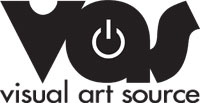Cornelia Schulz & Joachim Bandau at Patricia Sweetow
By Dewitt Cheng
Joachim Bandau, ”Untitled DC16,” 2010, watercolor on paper, 22 x 30”.
The cosmic battle between modernism and postmodernism having finally drawn to an exhausted close, like previous doctrinal disputes (e.g., classicism v. romanticism, and representation v. abstraction. Think of Goya’s cudgel-wielding duelists), we can now look at artworks without choosing sides. Much of the best art straddles and defies categories, and is transgressive or hybrid out of necessity, not out of aesthetic correctness nor faddist whim. The semi-sculptural, semi-abstract paintings of Cornelia Schulz and the lyrical, space-creating watercolors of minimalist sculptor Joachim Bandau declare the joy of nonsectarianism, delivering both intellectual vigor and optical pleasure.
In her ten works on display here, Schulz continues to explore and rejuvenate the nonrectangular constructed sculptural painting, a genre deriving from the shaped-canvas assemblage works of Frank Stella, Elizabeth Murray and others. These small works, composed of irregularly shaped pieces that have been bolted together to form complex formations resembling landscapes seen from the air, have an authority and presence that belie their modest size, around two feet square. In the 1970s, Schulz explored the interplay and contrast between spontaneous Abstract Expressionist painterly gesture and Minimalism’s conceptual grid in large acrylics on canvas. Pieces like “Wizard of Odds,” “Inexplicable Event,” “Circuitous Route,” “Flag Waiver,” “Learning Curve,” and “No Right to Be Left” have raised the stakes by moving into three dimensions and utilizing a battery of paint-application methods. The artist moves from scraping and sanding to pouring slag-like puddles that dry with milk-skin puckered surfaces which she inks and wipes, all to enhance the suggestion of relief maps.
Certainly the collisions of geometric shape and organic texture/skin suggest geology and geography, nature seen through an organizing overlay of culture. But Schulz’s delicately tinted poured-paint blooms (constituting a metaphor for illusionism and reality) and her vibrantly-hued Euclidean rectangles, zigzags, sectors and wedges also suggest a marriage of archetypes. One example, feminine Pattern & Decoration is married to masculine Constructivism/Minimalism. The dance of polarities here is achieves a dynamic balance. Schulz’s hybrid paintings are seriously playful works that eschew narrow stylistic partisanship and derive considerable beauty and power by synthesizing ostensibly adversarial pictorial orientations that are ingeniously assembled from pieces that shouldn’t fit. But they do, somehow.
Bandau’s paintings and sculptures, too, escape easy categorization. Entitled “Red and Black” (not so named for Stendhal’s famous novel), the show is comprised of nine untitled abstract watercolors in black and seven lacquer sculptures in red and black, four of which are abstractions, and three of which flirt with representation, albeit filtered through Minimalism. While that severe, reticent style provides the formal foundation for Bandau’s work ( born in 1936, he came of age during the Minimalist moment), the artist infuses it with associations – bunkers, coffins and mummy cases – that are far from the concerns of its phenomenological originators, Donald Judd, Robert Morris, Sol Lewitt et al., who were in part reacting against Pop Art’s perceived frivolity.
Bandau’s black watercolors (or aquarelles) share his sculptures’ geometric vocabulary, but the overlapping transparent gray rhomboids, floating squares or rectangles are foreshortened according to orthogonal perspective (i.e., without vanishing points; think of Asian painting). The effect is to create an airy space and a suggestion of time, as recorded in the motion-study photographs of Marey and Muybridge, and the multiple-exposure paintings of the Futurists, all done at least a century ago. Laboriously painted, one layer at a time, with Japanese soft goat-hair brushes, over a period of weeks or months, in a famously refractory medium, the paintings also take on a poetic aspect. Paul Klee’s geometrized color-band depictions of nature as process and metamorphosis come to mind, but Bandau’s aerial structures seem more about spiritual freedom and exaltation (despite their somber palettes, despite the arduous labor they demand) than rootedness. The red and black wooden wall sculptures, however, with their lustrous Burmese lacquer surfaces (Melanorrhea Usitata), inhabit the ambiguous space between illusionistic depiction (several depict bowls seen in perspective as floating elliptical planes) and pure sculpture in the minimalist vein, without allusions to real-world pre-existing objects. They’re sumptuous conundrums, Rosenbergian “anxious objects” of indeterminate art status that happen to be as soothing and beautiful as Matisse’s proverbial armchair.

